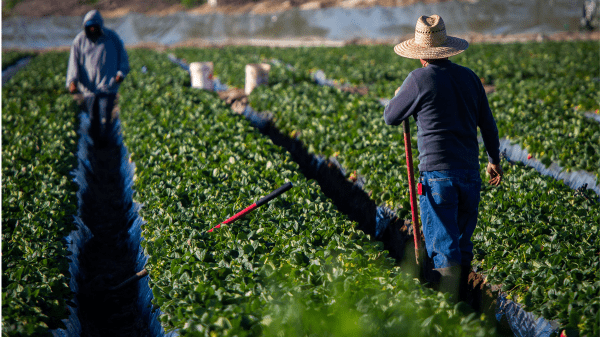Produce growers in Alabama are increasingly resorting to the H-2A guestworker program to supply their labor needs, reports the Alabama Daily News.
They aren’t alone. Other agricultural operations in the state, such as plant nurseries and catfish farms, are using the program as well.

“Even the row crop farmer is now having a hard time finding someone to drive a tractor across the field to prepare land and to harvest crops. They’re having to pull from (H-2A) as well,” according to Blake Thaxton, executive director of the Alabama Fruit and Vegetable Association.
H2-A visas issued to Alabama companies have risen from just a few dozen in 2017 to 2,178 in 2022, notes Alabama Daily News.
The H-2A is a federal program, so Alabama growers using it have to comply with nationwide regulations, including providing housing, transportation to and from the home country, and paying the adverse effect wage rate (AEWR), which is set to prevent guestworkers from undercutting U.S. workers.
The AEWR varies from state to state and is adjusted annually. The 2023 AEWR for Alabama is $13.67, as it is for other Deep South states: Arkansas, Mississippi, Georgia, and South Carolina.
Although this is the lowest AEWR in the United States, it is almost twice as much as the Alabama minimum wage, which remains at the federal level of $7.25.
Since H-2A employers have to pay their domestic employees at this rate as well, one might think this would create a draw to agricultural labor from poorly paid minimum wage jobs.
But that does not appear to have occurred. “When [growers] enter this program, they have to show real effort to recruit domestic workers,” Thaxton said. “It’s not uncommon for the farmer to receive zero applications for these jobs. It’s the physical nature of the jobs.”
Trends over recent decades indicate that foreign labor—legal or illegal—has posed little threat of competition for U.S. workers in the agricultural sector.
In California, “Mexican-born H-2A guest workers are the fresh blood in the farm workforce, and they are about a decade younger than the older and settled unauthorized Mexican-born workers who arrived in the 1990s and early 2000s,” reports Rural Migration News.
On a long-term basis, “rising farm employment, declining seasonality, and an aging and settled farm workforce have reduced farm worker migration and flexibility” in California, Rural Migration News adds.
Another trend is increased reliance on farm labor contractors (FLCs) for providing workers. In California, “the FLC share of average agricultural employment rose from 20 percent to 35 percent between 1990 and 2020,” the newsletter observed.



